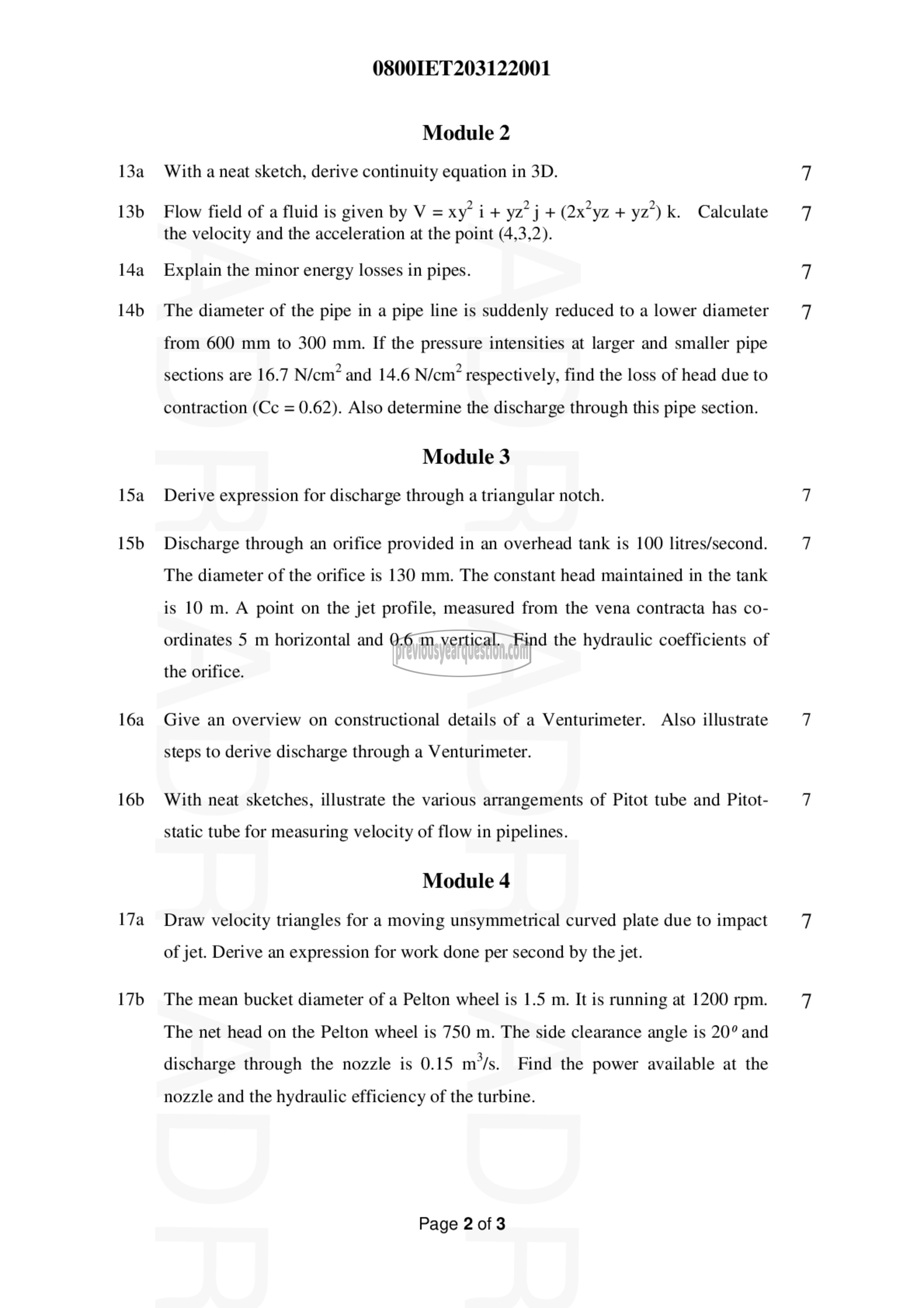APJ ABDUL KALAM TECHNOLOGICAL UNIVERSITY Previous Years Question Paper & Answer
Semester : SEMESTER 3
Subject : FLUID MECHANICS AND HYDRAULIC MACHINES
Year : 2020
Term : DECEMBER
Branch : INDUSTRIAL ENGINEERING
Scheme : 2019 Full Time
Course Code : IET 203
Page:2
138
130
14%
140
158
150
168
160
17a
17b
0860 0001
Module 2
With a neat sketch, derive continuity equation in 3D.
Flow field of a fluid is given by V = xy’ i+ yz? j + (2x°yz + yz) k. Calculate
the velocity and the acceleration at the point (4,3,2).
Explain the minor energy losses in pipes.
The diameter of the pipe in a pipe line is suddenly reduced to a lower diameter
from 600 mm to 300 mm. If the pressure intensities at larger and smaller pipe
sections are 16.7 N/cm’ and 14.6 N/cm? respectively, find the loss of head due to
contraction (Cc = 0.62). Also determine the discharge through this pipe section.
Module 3
Derive expression for discharge through a triangular notch.
Discharge through an orifice provided in an overhead tank is 100 litres/second.
The diameter of the orifice is 130 mm. The constant head maintained in the tank
is 10 m. A point on the jet profile, measured from the vena contracta has co-
ordinates 5 m horizontal and 0.6 m vertical. Find the hydraulic coefficients of
the orifice.
Give an overview on constructional details of a Venturimeter. Also illustrate
steps to derive discharge through a Venturimeter.
With neat sketches, illustrate the various arrangements of Pitot tube and Pitot-
static tube for measuring velocity of flow in pipelines.
Module 4
Draw velocity triangles for a moving unsymmetrical curved plate due to impact
of jet. Derive an expression for work done per second by the jet.
The mean bucket diameter of a Pelton wheel is 1.5 m. It is running at 1200 rpm.
The net head on the Pelton wheel is 750 m. The side clearance angle is 20° and
discharge through the nozzle is 0.15 m/s. Find the power available at the
nozzle and the hydraulic efficiency of the turbine.
Page 2 of 3
